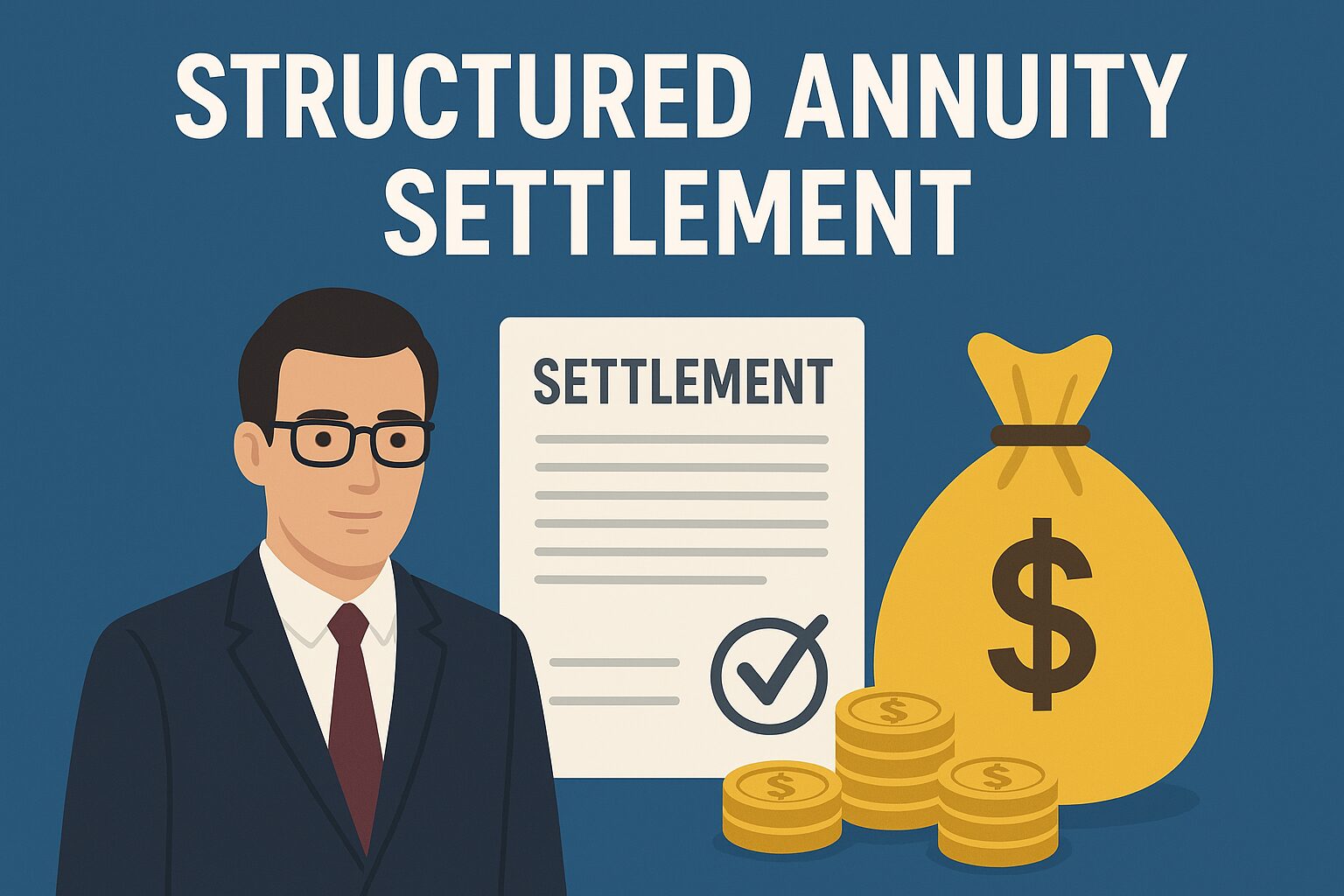Introduction to Structured Annuity Settlements
Imagine receiving a huge sum of money after a lawsuit or accident claim. It sounds exciting, right? But here’s the catch—most people spend lump sums too quickly and end up broke. That’s where structured annuity settlements step in. They’re designed to give you financial security by spreading payments out over time.
How Structured Settlements Work
At the core, a structured settlement is a financial arrangement where instead of receiving one massive check, you get smaller, scheduled payments. These can be monthly, yearly, or even set up for life. Think of it like a paycheck that never stops—only it’s from an insurance company rather than an employer.
Lump-Sum vs Periodic Payments
A lump sum gives you all your money upfront, which sounds great but is risky if not managed well. Structured settlements, on the other hand, provide stability. It’s the difference between eating all the cookies in one night versus enjoying one each day for months.
History of Structured Settlements
Structured settlements gained popularity in the 1970s in the U.S., when courts realized many plaintiffs burned through lump sums too quickly. Laws were introduced to encourage structured payments, making them a safer choice for victims of personal injury and similar cases.
Types of Structured Settlements
-
Personal Injury Settlements – Common for accident victims.
-
Workers’ Compensation Settlements – Protects employees hurt on the job.
-
Wrongful Death Settlements – Provides financial support to surviving family members.
-
Medical Malpractice Settlements – Ensures victims of medical errors are compensated long-term.
Benefits of Structured Settlements
-
Long-term financial security – Payments arrive regularly, reducing the chance of running out of money.
-
Tax advantages – Many structured settlements are tax-free under U.S. law.
-
Protection from overspending – Since you don’t get all the money at once, you can’t blow it overnight.
Drawbacks of Structured Settlements
-
Lack of flexibility – Once set, you can’t easily change your payment schedule.
-
Limited access to funds – If you need cash for an emergency, you may struggle.
-
Inflation concerns – Payments may not keep up with rising living costs.
Structured Settlements vs Lump-Sum Payments
Which is better? Well, it depends. A lump sum gives you total control but also total risk. A structured settlement is safer for those who prefer guaranteed income over time. It’s a bit like choosing between a lottery payout upfront or an annuity spread across decades.
How Structured Settlement Payments Are Calculated
Insurance companies consider:
-
Life expectancy – Longer life may mean smaller payments spread out.
-
Company’s investment returns – Insurers use interest rates to fund your settlement.
-
Legal agreements – Court rulings affect how much and how often you get paid.
The Role of Insurance Companies
Insurance companies play a huge role—they’re the ones funding and guaranteeing the payments. But that means your financial security is tied to their stability. Always check the company’s rating before finalizing a settlement.
Selling a Structured Settlement
Sometimes life throws curveballs, and you might need cash fast. Selling a structured settlement means trading future payments for a lump sum today. But beware—it usually comes with heavy discounts, so you won’t get the full value.
Structured Settlement Brokers and Companies
Brokers act as middlemen between you and potential buyers. Choosing a trustworthy one is crucial. Look for transparency, clear contracts, and companies with strong reputations.
Legal and Tax Implications
Structured settlements are often tax-free, but selling them may trigger tax consequences. Courts usually need to approve any sale to ensure you’re not being taken advantage of.
Structured Settlements for Minors
When minors receive settlements, courts play a protective role. Payments are usually set to begin once the child turns 18, ensuring the money lasts when they’re old enough to manage it.
Tips for Managing a Structured Settlement
-
Work with a financial planner.
-
Don’t fall for quick-cash settlement buyers offering unfair deals.
-
Keep track of your payment schedule and plan around it.
Future of Structured Settlements
With financial technology evolving, structured settlements may become more flexible in the future. Digital platforms could make tracking, selling, or modifying settlements more transparent and accessible.
Conclusion
A structured annuity settlement is like a safety net—it protects you from blowing through money too quickly while giving you peace of mind. While it may not be as flashy as a lump-sum check, it offers security, stability, and long-term financial health. For most people, that’s worth far more than instant gratification.
Read More
Asbestos Lawyers in USA: Everything You Need to Know
FAQs
1. Can I change my structured settlement once it’s set?
Not usually. Once agreed upon, the terms are fixed.
2. Is a structured settlement always tax-free?
In many personal injury and workers’ comp cases, yes. But selling your settlement may create tax liabilities.
3. How do I sell my structured settlement safely?
Work with a licensed broker and ensure court approval. Avoid companies with poor reputations.
4. Do minors get structured settlements too?
Yes. Courts often manage these until the child reaches adulthood.
5. Which is better: lump sum or structured settlement?
It depends on your financial discipline. If you can manage money wisely, a lump sum could work. If not, a structured settlement offers more protection.

1 thought on “Structured Annuity Settlement: Everything You Need to Know”